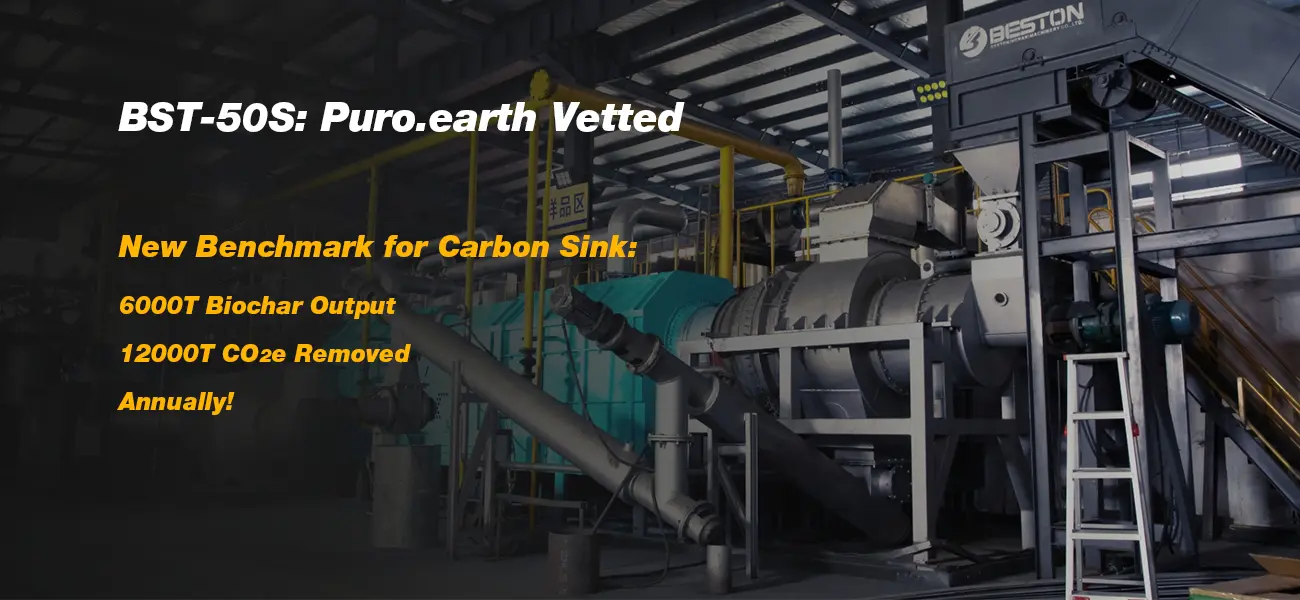As industries worldwide intensify efforts to reduce carbon emissions, the shift toward low-carbon production processes has become more pressing than ever. Among the many innovative solutions emerging in this field, biochar production stands out due to its dual benefit of carbon sequestration and renewable energy generation. A key contributor to this sustainable revolution is the use of energy-efficient biochar pyrolysis production technology.
Biochar is a carbon-rich substance derived from biomass through pyrolysis—a thermal decomposition process conducted in the absence of oxygen. This process not only reduces the volume of waste but also locks carbon in a stable form, preventing its return to the atmosphere as CO2. Modern biochar pyrolysis equipment plays a pivotal role in ensuring this process remains energy-efficient, cost-effective, and environmentally friendly.
How Energy Efficiency Enhances Sustainability
Energy efficiency is not merely a technical benchmark; it is the backbone of sustainable industrial operations. In the context of biochar production, it directly influences both environmental impact and operational cost. Traditional combustion methods often lose a large amount of energy in the form of heat and unutilized gas. In contrast, advanced pyrolysis units capture this heat and convert it into usable energy, significantly improving overall system efficiency.
The utilization of cutting-edge thermal control, insulation materials, and heat recycling mechanisms in modern biochar systems has dramatically reduced energy losses. Many machines now include intelligent controls that monitor and adjust temperature, feed rate, and residence time to optimize pyrolysis conditions, thereby enhancing biochar yield and energy output simultaneously.
Biomass Feedstock and Efficiency Synergy
Another vital factor in determining energy efficiency is the choice and preparation of feedstock. Biomass such as wood chips, rice husks, coconut shells, and even sewage sludge can be used. However, moisture content plays a crucial role in the pyrolysis process. A higher moisture content requires more energy to evaporate water before the actual pyrolysis begins, thereby reducing net efficiency.
Pre-treatment processes, such as drying and size reduction, are essential to maintaining high energy efficiency. Fortunately, some charcoal machine systems integrate these features into their design, streamlining operations and reducing external energy input.
Waste Heat Recovery: A Key to Optimization
One of the hallmark features of energy-efficient biochar equipment is waste heat recovery. By capturing excess thermal energy generated during pyrolysis, systems can reuse it to preheat incoming feedstock or dry biomass. This approach minimizes the need for additional energy input and significantly lowers fuel consumption.
Some high-end pyrolysis systems even generate surplus energy that can be converted into electricity or used for district heating, offering an added revenue stream or reducing overall operational energy costs. This closed-loop energy cycle is central to the philosophy of sustainable, low-carbon production.

Automation and Digital Monitoring
Automation has elevated the efficiency and reliability of biochar production to new levels. Sensors embedded throughout the production line gather real-time data on temperature, pressure, gas flow, and biochar quality. This data is analyzed by intelligent control systems that automatically adjust parameters to maintain optimal pyrolysis conditions.
Digital monitoring not only ensures consistent quality but also reduces the likelihood of human error and downtime. Operators can remotely monitor and control the process, reducing the need for manual intervention and enabling more efficient use of labor and energy.
Environmental Benefits of Energy-Efficient Systems
The environmental benefits of energy-efficient biochar systems go beyond carbon sequestration. By maximizing fuel usage and minimizing waste, these systems help reduce the emission of harmful pollutants such as carbon monoxide, particulate matter, and volatile organic compounds.
Additionally, biochar itself is a highly beneficial byproduct. It improves soil health, increases water retention, and reduces the need for chemical fertilizers. Thus, investing in efficient pyrolysis technology is not just good for the bottom line—it’s a significant step toward regenerative environmental practices.
Policy Support and Market Trends
Government incentives and international regulations are also pushing industries toward more energy-efficient production methods. Carbon credits, subsidies, and renewable energy certifications have made it financially viable for companies to adopt sustainable technologies. The market for biochar and related equipment is expanding rapidly, especially in regions with strong environmental policies such as the EU, North America, and parts of Asia.
As consumer demand for sustainable products grows, businesses that invest in energy-efficient biochar machine are likely to enjoy a competitive advantage. It’s a smart strategic move for companies aiming to future-proof their operations while contributing positively to climate action.
Why Choose Beston Group for Biochar Solutions
When it comes to selecting reliable and efficient pyrolysis systems, Beston Group stands out as a leader in the field. With a strong track record of innovation and customer satisfaction, Beston provides a range of advanced technologies designed to maximize energy efficiency, minimize environmental impact, and ensure economic feasibility.
Beston’s suite of solutions includes not only high-performance biochar machine systems but also integrated support for installation, training, and ongoing technical assistance. Their comprehensive approach makes it easier for businesses to transition to low-carbon, sustainable production methods with confidence.
Whether you’re seeking to produce high-quality biochar for soil remediation, reduce agricultural waste, or generate renewable energy, Beston’s biochar pyrolysis equipment offers the performance and reliability needed for success in the green economy.